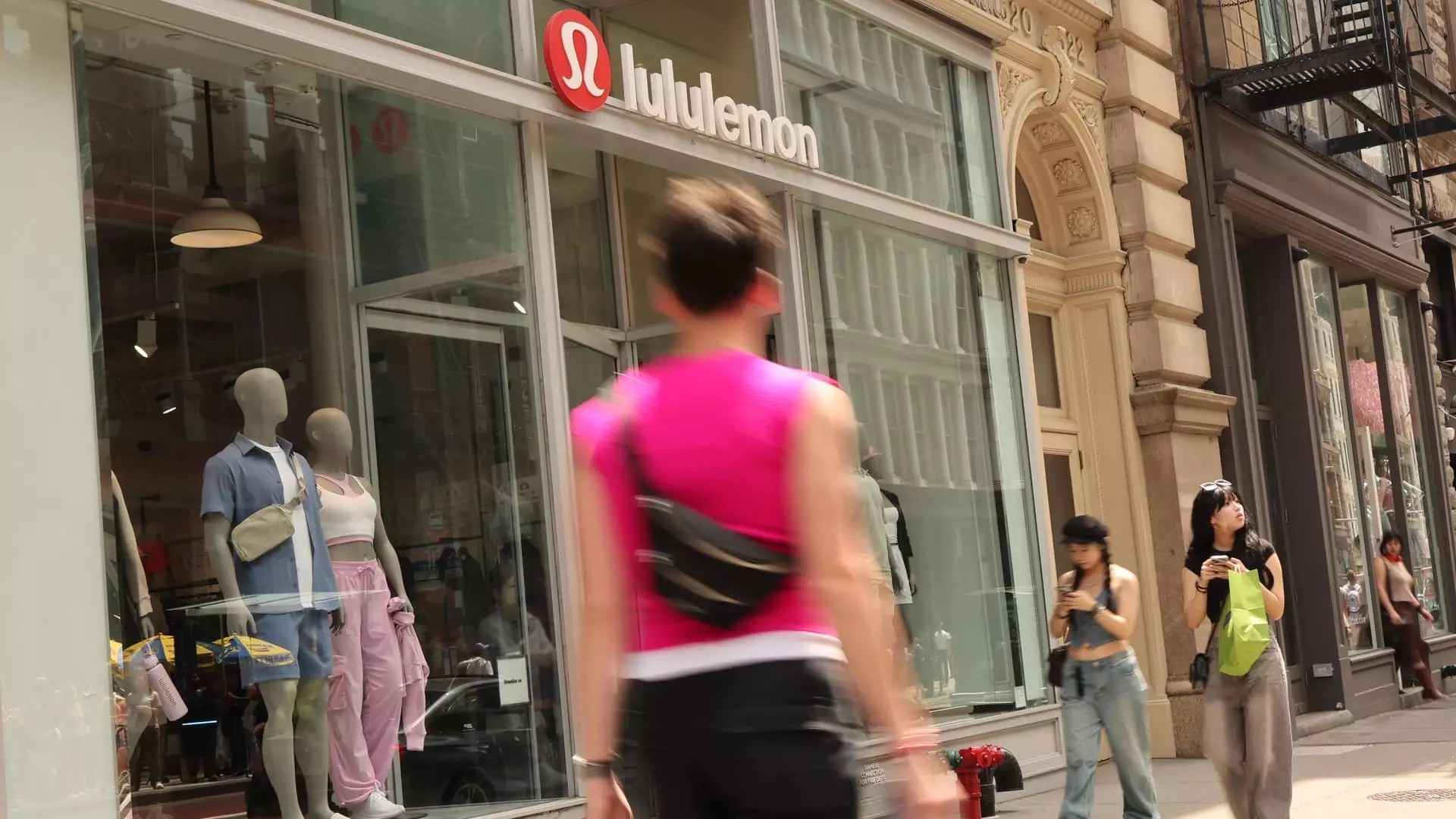Lululemon Athletica Inc., known for its premium athletic wear, has recently showcased a performance that starkly contrasts expectations. Despite beating Wall Street’s earnings per share and revenue estimates for the first quarter, the company announced a significant cut to its full-year guidance, leading to a 20% drop in its stock during after-hours trading. This begs a critical examination of the brand’s strategy and the broader economic environment it navigates. The decision to recalibrate expectations amidst a “dynamic macroenvironment” is more than just a cautionary tale; it raises red flags about the sustainability of Lululemon’s growth trajectory in a changing retail landscape.
Strategic Omens in Earnings Adjustments
Lululemon’s fiscal first quarter reported earnings of $2.60 per share on revenues of $2.37 billion. At face value, these numbers might seem pleasing. Yet, the additional insight into the cut in full-year earnings guidance to a range between $14.58 and $14.78 per share reveals a disconcerting pattern. An initial estimate of $14.95 to $15.15 was drastically trimmed, suggesting that Lululemon is aware of significant headwinds ahead. In a market where investors expect sustained growth, this bearish outlook is troubling. It indicates not merely a fluctuating quarter but a realignment of Lululemon’s strategic vision, possibly in response to tariffs and economic uncertainties regarding consumer spending.
Tariffs and Growing Competition: A Double-Edged Sword
The cloud of tariffs looming over American retailers is omnipresent. With this in mind, Lululemon isn’t an outlier but part of a larger trend affecting peers like Abercrombie & Fitch and Macy’s, both of which have also scaled back their profit forecasts. Tariffs have proven to be a looming specter in the background, exerting upward pressure on prices while simultaneously compressing margins. For Lululemon, which relies profoundly on foreign manufacturing without owning its production facilities, these tariffs could mean rethinking supply chain strategies or, worse, passing costs onto consumers. This risks alienating their target demographic, who expect quality at a premium but may balk at ever-increasing prices without an accompanying value proposition.
Consumer Sentiment: More Than Just Numbers
The retail landscape has become an arena where consumer sentiment plays a pivotal role in shaping sales. According to Lululemon’s report, while the company’s overall sales rose, comparable sales merely improved by 1%, vastly underperforming against Wall Street’s expectations of 3%. This dynamic captures a concerning reality: consumers may be growing wary of premium prices amid psychological factors induced by economic uncertainty. As buyers tighten their belts in anticipation of a slowing economy, even successful brands like Lululemon may find themselves struggling to maintain their foothold.
The Global Supply Chain Conundrum
Lululemon’s manufacturing geography paints a complex picture of dependency and risk. With a significant proportion of its products being sourced from nations such as Vietnam and Cambodia, the brand is subject to the whims of international trade dynamics. A shifting or destabilized geopolitical landscape could present severe risks to their supply chain. As highlighted through this situation, external factors such as tariffs alter not only the cost of goods but the operational paradigm within which companies like Lululemon must operate. Their reliance on third-party suppliers adds another layer of vulnerability—a notion that should alarm investors and consumers alike.
Mismatched Expectations: A Lesson in Investor Communication
The discrepancy between Lululemon’s strong Q1 numbers and the forecasted revenue cuts raises questions about its communication with investors. Wall Street, expecting adherence to a certain growth narrative, finds itself wrestling with the shock of diminished guidance. The immediate market reaction— a staggering decline of approximately 20% post-announcement—serves as a lesson in the precarious balance between optimism and realism. Companies must tread carefully when projecting growth, as even minor adjustments can invoke significant market volatility and breed mistrust among stakeholders.
In sum, Lululemon is at a crossroads. While its first-quarter performance bore signs of strength, the crucial maneuver of cutting long-term expectations amid rising competitive pressures could be indicative of deeper underlying issues. The company’s struggles with tariffs, shifting consumer sentiment, and a complex global supply chain present an intriguing narrative ripe for exploration and scrutiny. As the retail environment grows ever more competitive and tumultuous, Lululemon’s next steps will determine not just its fate, but possibly signal broader shifts within the industry itself.


Leave a Reply